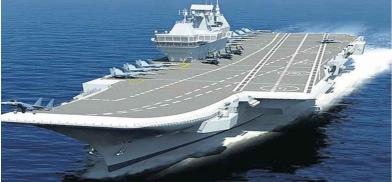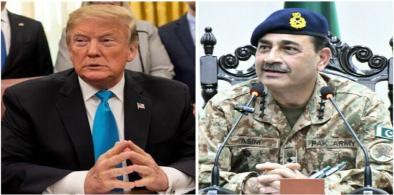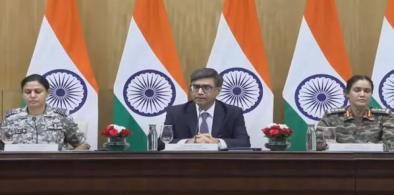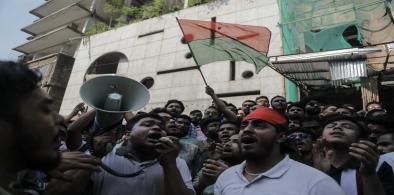INS Vikrant in its new incarnation marks India as a major warship-building nation
Both these carriers, which are floating cities with massive flying and firepower, still do not adequately fulfill India’s maritime force requirement. With two vast seaboards and the Indian Ocean region and two rogue adversarial nations, the considered assessment by old-salt veterans is that even three aircraft carriers, meaning two on the sea and one in refit, are not enough

INS Vikrant, Indian Navy’s second aircraft carrier and the largest warship built in India, will be commissioned on September 2, 2022, marking a historical milestone in India’s major aim of ‘atmanirbharta’ policy (self-reliance) in its defence. Categorised as Indigenous Aircraft Carrier (IAC), it will host Prime Minister Narendra Modi as the chief guest on this momentous occasion.
Designed by the Indian Navy’s Warship Design Bureau (WDB) and built by Cochin Shipyard Limited (CSL), a public sector shipyard under the Ministry of Ports, Shipping & Waterways, the IAC is christened after her illustrious forerunner, India’s first aircraft carrier which played a vital role in the 1971 war.
The original INS Vikrant was a majestic-class aircraft carrier that was being built as HMS Hercules for the British Royal Navy during World War II but whose construction was put on hold when the war ended. India purchased the incomplete carrier in 1957, and construction was completed in 1961. Commissioned as the first and only aircraft carrier of the Indian Navy, she played a key role in enforcing the naval blockade of East Pakistan during the 1971 India-Pakistani war. In its later years, she underwent major refits to embark on modern aircraft, before being decommissioned in January 1997, after which she was preserved as a museum ship at Cuffe Parade, Mumbai until 2012.
In January 2014, the ship was sold through an online auction and scrapped in November 2014 after final clearance from the Supreme Court of India.
The present Vikrant’s foundation as the prestigious IAC was firmly established in April 2005 by ceremonial steel cutting. In order to push the indigenisation drive, the warship-grade steel required for the construction of the IAC was successfully indigenised through the Steel Authority of India Limited (SAIL) in collaboration with the Defence Research & Development Laboratory (DRDL) and the Indian Navy. The hull fabrication progressed thereafter, and the ship’s keel was laid in February 2009. The first phase of ship construction was completed with the successful launch of the ship in August 2013.
Vikrant - then and how
A comparison between the two Vikrants is relevant to give an idea of how large the present one is.
The earlier Vikrant, 210 metres (m) long and 39 m wide, displaced 16,000 t (15,750 long tons) at standard load and 19,500 t (19,200 long tons) at deep load. With a maximum speed of 25 knots (46 km/h; 29 mph), she carried about 3,175 t (3,125 long tons) of fuel oil that gave her a range of 12,000 nautical miles (NM, 22,000 km) at 14 knots (26 km/h), and 6,200 miles (10,000 km) at 23 knots (43 km/h; 26 mph). The air and ship crew comprised 1,110 officers and men. Armed with sixteen 40-millimeter (1.6 in) Bofors anti-aircraft guns, later reduced to eight, at various times, its aircraft consisted of Hawker Sea Hawk and Sea Harrier (STOVL-short take-off and vertical landing) jet fighters, Sea King Mk 42B and HAL’s Chetak helicopters, and Breguet Alizé Br.1050 anti-submarine aircraft. The carrier fielded between 21 and 23 of all types of aircraft.
The new Vikrant, 262 m long and 62 m wide, displaces approximately 43000 T when fully loaded, having a maximum designed speed of 28 Knots with an endurance of 7500 NM. She has around 2200 compartments, designed for a crew of around 1600 that include specialised cabins to accommodate women officers and sailors. Designed with a very high degree of automation for machinery operations, ship navigation and survivability, the carrier is equipped with the latest state-of-the-art equipment and systems. The ship also boasts of a fully-fledged state-of-the-art Medical Complex with the latest medical equipment facilities that include major modular OT, emergency modular OT, physiotherapy clinic, ICU, laboratories, CT scanner, X-Ray machines, Dental complex, Isolation ward and telemedicine facilities etc.
The ship would be capable of operating an air wing consisting of 30 aircraft comprising of MiG-29K fighter jets, Kamov-31, MH-60R multi-role helicopters, in addition to indigenously manufactured Advanced Light Helicopters (ALH) and Light Combat Aircraft (LCA) (Navy). Using a novel aircraft-operation mode known as Short Take-Off But Arrested Recovery (STOBAR), the IAC is equipped with a ski-jump for launching aircraft, and a set of three ‘arrester wires’ for their recovery onboard.
In spite of COVID-related imponderables and restrictions, adversely affecting the availability of OEMs & supply chain, the readiness of the ship’s propulsion and Power generation equipment/ systems in the harbour was tested as part of Basin Trials on Nov 20. Vikrant has successfully completed multiple phases of Sea Trials from Aug 21 to date, where the ship’s performance, including the response of the ship’s hull to various conditions of operations, maneuvering trials, main propulsion, Power Generation and Distribution (PGD), ship’s Navigation and Communication systems, endurance testing of propulsion machinery, electrical & electronic suites, deck machinery, lifesaving appliances, integrated trials of the majority of equipment/ systems and trials of other auxiliary equipment were ascertained and proved to the satisfaction of Indian Navy’s trials team and ship’s crew.
In line with the prevailing practices being followed by other advanced countries having experience in building an aircraft carrier, the deck integration trials of fixed-wing aircraft and exploitation of aviation facility complex will be carried out post commissioning of the ship when the operational command and control of the ship including flight safety is with the Navy.
Enhance navy's status
Vikrant has much indigenous equipment and machinery, involving major industrial houses in the country viz. BEL, BHEL, GRSE, Keltron, Kirloskar, Larsen & Toubro, Wartsila India etc. as well as over 100 MSMEs. The indigenization efforts have also led to the development of ancillary industries, besides the generation of employment opportunities for 2000 CSL personnel and about 13000 employees in ancillary industries thus bolstering plough-back effect on Nation’s economy. A major spin-off of building an indigenous aircraft carrier is the development and production of indigenous warship grade steel for the ship through a partnership between the Navy, DRDO and SAIL, which has enabled the country to become self-sufficient with respect to warship steel. Indigenous content of the project is approx. 76%. The Indigenous construction of an aircraft carrier by India is indeed commendable and marks great progress from the pre-1971 era when the government was ‘sea-blind’ and heavily dependent on importing up to 70% of arms and equipment, including the crucial categories.
Added to INS Vikramaditya, Vikrant will enhance the Indian Navy’s status as a two-carrier force. The Vikramaditya, a floating airfield about 284 meters long and with a maximum beam of about 60 meters, 20 storeys tall from keel to the highest point and 44,500 tonnes, is larger and heavier than Vikrant- stretching as much as three football fields put together and accommodate 30 aircraft. With over 1,600 personnel on board, Vikramaditya it needs nearly 1,00,000 eggs, 20,000 litres of milk and 16 tonnes of rice per month. With her complete stock of provisions, she can sustain herself at sea for a period of about 45 days and is capable of operations up to a range of over 7,000 nautical miles or 13000 km.
Both these carriers, which are floating cities with massive flying and firepower, still do not adequately fulfill India’s maritime force requirement. With two vast seaboards and the Indian Ocean region and two rogue adversarial nations, the considered assessment by old-salt veterans is that even three aircraft carriers, meaning two on the sea and one in refit, are not enough. Ideally, India should have four aircraft carriers so that three are always afloat.
(The author is a former Defence Ministry and Indian Army spokesperson. Views are personal. He can be contacted at wordsword02@gmail.com.)
If we had been aware of your website a year ago, we would have been rescued from the useless measures we were participating in. Thank you very much.
adults toys
out. I like what I see so now i'm followung you.
Look forward to checking out your web page again.
I'm absolutely enjoying your blog and look forward to new updates.
Just wanted to tell you keep up the excellent work!
When someone writes an piece of writing he/she retains the plan of
a user in his/her mind that how a user can understand it.
So that's why this post is great. Thanks!
i could also make comment due to this good
paragraph.
understanding something entirely, but this post provides fastidious understanding even.
thanks for providing such statistics.
people of blogging, that truly how to do blogging and site-building.
These are in fact great ideas in on the topic of blogging.
You have touched some fastidious points here.
Any way keep up wrinting.
It is the best time to make some plans for the future and it's time to be happy.
I have read this post and if I could I desire to suggest you some
interesting things or suggestions. Maybe you could write next articles referring to this article.
I wish to read even more things about it!
with your RSS. I don't know why I am unable to join it.
Is there anybody getting similar RSS problems? Anybody who knows
the answer can you kindly respond? Thanx!!
Mostbet Pakistan offers the best odds for sports betting! Sign up now and get exclusive bonuses. ➡️ <a href=https://most-bet-pakistan.com/>mostbet pakistan </a>
Relevant subject! Exactly what I needed! Mostbet Azərbaycanda ən populyar bukmeker və kazinodur! Bonuslar və yüksək mərc imkanları sizi gözləyir. ➡️ <a href=https://mostbet-aze-giris.com/> mostbet az casino </a> The real-world examples included here bridge the gap between theory and practice with remarkable effectiveness.Real-life proof! Works in practice!
Mostbet Portugal - o melhor casino online! Apostas desportivas e jogos de casino emocionantes. ➡️ <a href=https://oambidestro.pt/>Mostbet Casino PT </a> . Useful illustrations! Hands-on value! The depth of practical knowledge shared here reflects years of experience and testing in real-world conditions.




















Post a Comment